Our very boutique Relais 6 Hotel did everything well. It was a lovely hotel, elegantly appointed with an old worldly yet homely charm. Once a large residence*, the graceful old 1930's building had been tastefully converted in to a small but quite luxurious hotel. It is located in the affluent, peaceful northern suburbs of Rome, only minutes by taxi to the city centre but far enough away from the hustle and bustle of the considerable tourist crowds.
* Interestingly, the building was a war time hideaway before it became the headquarters of the Allied Intelligence during World War II. A small exhibition area and museum is now housed within the hotel dedicated to "The Allied Forces in Italy"
From the minute we were picked up by our driver the evening before to our late evening check in and organisation of our first half-day tour, all our hotel procedures went smoothly. And nothing was too much trouble for the professional but very helpful staff. Alan had initially found the hotel on the Internet and was very impressed by the excellent reviews it had earned. It was heartening to find that hotel review sites such as TripAdvisor can be really very helpful.
Breakfast was a very pleasant affair in the cheerful dining room at the rear of the building. The buffet breakfast was simple but with excellent quality fresh fruit, breads and quite a variety of hot foods. We had plenty to time to relax and enjoyed the company of Australian couple Robyn and Phil who ran the Magnetic Island Bed & Breakfast at Magnetic Island just off the north Queensland coast. For some reason, it is always comforting to meet people from your own country when you have been travelling and away from home for some time.
Alan and I had decided well beforehand that we didn't want to do too much touring. Rome was meant to be a relaxing stopover on our way to Shanghai and home, and an opportunity to obtain a glimpse of the ancient city and perhaps a splash of appreciation for the famous Roman culture. And we knew that in Rome, we had no hope of avoiding being tourists...
We decided on two half-day tours, broken by a day on our own to browse the piazzas and streetscapes of Rome. We are definitely not the tourist types but it was our best - well, only option. Rome is certainly designed for the tourists group culture - we certainly didn't want to spend our precious hours queuing for tickets (which you had to do if you were not on a tour), nor did we have the time to research the ancient history and specific sites we wished to visit. We chose an afternoon tour of the famous Palatine Hill and the Colosseum. It was efficiently organised and we were picked up by a mini bus from the Relais 6 foyer.
Our hearts sank as our mini bus occupants joined up with several other buses and seemingly hundreds of tourists. We must admit however that despite our snarls and snorts, our tour was conducted in a very orderly fashion. Our tour leader was a handsome and charming man, probably in his mid 60's and SO Roman. I am sure he accentuated his Roman accent threefold. But he was excellent at his job; energetic, expressive, enthusiastic and entertaining yet very patient and thoughtful to his very large and highly disparate tour group. We were all equipped with ear pieces which worked amazingly well and we were able to hear and understand him perfectly throughout the tour. We were even more surprised that our tour leader was able to keep the 50 or so of us together through the throngs of tourists. Well, that is without the misfortune of a few people who inadvertently walked through the Exit Gates and could not be rescued! It was all too easy to make that fatal mistake.
PALATINE HILL
Unfortunately, I did not study ancient history at school but I do remember being told the story of Romulus and Remus, and being an animal freak I recall being impressed that these two children of long ago were raised by a wild she-wolf. The not so nice legend is described by Wikipedia:
"According to Roman mythology, the Palatine Hill (of Rome) was the location of the cave known as Lupercal, where (babies) Romulus and Remus (twin sons of Mars) were found by a she-wolf Lupa (who allowed them to feed from her and in doing so), kept them alive. According to this legend, the shepherd Faustulus found the infants, and with his wife Acca Larentia raised the children (as their own). When they were older, the boys killed their great-uncle (who apparently seized the throne from their grandfather) and decided to build a new city of their own on the banks of the River Tiber. Suddenly, they had a violent row with each other and in the end Romulus killed his twin brother Remus. This is how 'Rome' got its name - from 'Romulus'."
Whether or not you chose to believe the legend, it is true that Rome was founded on the site of Palatine Hill, a four-sided plateau rising some 40 meters south of the Forum in Rome and about 50 meters above sea level. And it is where archeological discoveries have ranged from prehistoric remains to the ruins of imperial palaces. The Palatine originally consisted of three summits: the Germalus to the north; the Velia, an isthmus that linked the Palatine to the neighbouring Esquiline Hill; and the Palatine to the south. The Palatine, being the highest of the summits later became the name of the entire hill.
Rome's Republican era was the period of ancient Roman civilisation dated from 509 BC to 27 BC when the Roman Empire was established. It was during this period that Rome's control expanded from the city's immediate surroundings to complete rule over the Mediterranean region. During this time, Palatine Hill Rome became a fashionable and exclusive place to live, partly due to the superb views on the top of the hill, which stretched to a height of about forty meters above the city. It was also believed that the air was cleaner on top of the hill and that those who lived there were less likely to catch the diseases of the poor working class that "festered in the bad air below".
The Palatine Hill reads almost like a "Who was Who" of Ancient Roman rulers. Emperor Julius Caesar's tomb is found there and founder of the Roman Empire, Emperor Augustus (27 BC - 14AD) lived on Palatine Hill all his life. Ancient Roman philosopher Cicero and Roman politician Mark Antony also had houses there. Later members of the Flavian dynasty encompassing the reigns of Vespasian (69–79), and his two sons Titus (79–81) and Domitian (81–96) built their domains on the Palatine and at one stage, the entire hill was covered with imperial palaces. Palatine Hill became synonymous with palaces; in many languages, including English the word "palace" is derived from "palatine".
The area later fell into disrepair, and in the Middle Ages churches and castles were built over the ruins. Most of the Palatine Hill as it appears today is covered by the ruins of Emperor Domitian's vast complex, which served as the main imperial palace for 300 years.
THE FORUM
The Forum, located in the small valley between the Palatine and Capitoline Hills is a rectangular plaza which was once the central focal point of Roman public life. The Forum was for centuries the site of triumphal processions and elections, the venue for public speeches, criminal trials and gladiatorial matches. It was also the centre for Rome's commercial affairs.
Like many of Rome's great urban developments, the Forum fell into disrepair after the fall of the Roman Empire until eventually it was used as farming land. In the Middle Ages it was known as the Campo Vaccino (literally 'Cow Field') and extensively plundered for its stone and marble. The area was systematically excavated for historical sites in the 18th and 19th centuries, and excavations and considerable restoration continue to this day.
Today, the Forum is surrounded by the commanding ruins of ancient government buildings, royal residences, basilicas, shrines and temples; a mind blowing open air museum right in the centre of modern day Rome. The site is literally littered with a breathtaking array of ancient ruins, many of which are in splendid condition for their incredible age. Not surprisingly the complex was brimming with tourists which unfortunately took away much of the ambiance of such a famous ancient site.
Our early afternoon tour on Palatine Hill and the Forum was interesting and highly worthwhile. Our only criticism was that the signage was very poor to non-existent and even with our guide it was impossible to identify a lot of the buildings. It would be ideal to have a tour of the site followed by a private walk around the ruins with a guide booklet but of course a day visitor never has the time - or more to the point the energy - to undertake such a luxury.
THE COLOSSAL COLOSSEUM
A relatively short walk east of the Forum took us to the site of the monumental Rome Colosseum. We had seen many photos of this famous monument but nothing really prepared us for the magnitude and scope of this commanding structure. Despite being built almost 2,000 years ago, about one third of the original facade still remains and the interior is in remarkably wonderful condition. Originally covered in white travertine stone slabs, it is however described by commentators as being "just a skeleton" of its former glory. In its hey day, it must have been a most breathtaking sight.
Also known as "The Flavius Amphitheatre", the Colosseum is considered the largest and most imposing monument of Roman civilisation and widely regarded as one of the world's greatest works of architecture and engineering. Its construction began under the rule of Emperor Vespasian of the Flavia family in 72 AD and was completed by his son Titus in 80 AD. Further modifications were made under the rule of Emperor Domitian 81-96 AD.
The Colosseum was used for the gruesome entertainment of the Roman people and included gladiatorial contests, mock sea battles, re-enactment of famous battles, animal hunts and killings and dramas based on classical mythology. It is estimated that over one million wild animals were slaughtered at this site - to say nothing of the hundreds of poor gladiators, prisoners of war and unfortunate slaves.
Unlike the earlier Greek theatres that were built into hillsides, the Colosseum was built as a free standing structure in an elliptical shape to maximise its seating for spectators. The long axis measures 188 meters and the short axis 156 meters, and the height of the building is some 50 meters. It is estimated the Colosseum could accommodate up to 70,000 spectators.
Almost like modern stadiums, the Colosseum protected its spectators from the sun by an ingenious roof covering called the "Valarium" which was an enormous tarpaulin hung by a series of ropes, winches and wooden poles. According to Italy Guides documentation, it took "one hundred sailors from the Imperial Fleet to move it in perfect synchrony to the beating of a drum".
The two underground floors or the "hypogeum" housed the lifts and hoists with their counter weights which can still be seen today. They were in fact in place to produce the "special effects of their time" by hoisting up gladiators and animals so that they could burst through to the arena through trap doors and specially laid white dust, thus providing great theatre effect.
Seats were allotted in accordance with the strict divisions of Roman society. Patrician families sat in the seats closest to the action - the floor just above the arena. Knights sat immediately above followed by seating for the intermediate classes which led up to wooden steps which were reserved for the "plebeians". Each spectator had a free ticket in the form of pottery shards, specifying the entrance arch and sector according to their specified seating.
Unlike the Forum and Palatine Hill, the signage for the Colosseum was excellent, if rather too explicit of the gory details, and painted a detailed, colourful and rather blood thirsty picture of a day in the life of a Colosseum spectacle:
"The spectacle day began in the morning with the presentation of all the participants (pompa). This was followed by the venatoines, hunts in which the hunters tackled wild animals lurking among sets replicating the geographical contexts from which they came. During lunch interval, when executions 'ad bestias' took place, the condemned, naked and unarmed, faced the wild beasts which would eventually tear them to pieces. During the intervals there would be performances by jugglers, acrobats and magicians as well as parodies and re-enactments of ancient myths. Finally, gladiatorial combats (munera) were held in the afternoon. Their origin, perhaps Etruscan (civilization of ancient Italy in the area corresponding roughly to Tuscany, western Umbria, and northern Lazio) or Samnite (the ancient country of Samnia in central Italy), was linked to funerary celebrations in honour of eminent individuals. The participants in these combats were usually prisoners of war or slaves, but some gladiators were free men seeking fame and fortune. There were numerous categories of gladiators, distinguished by their weapons and combat techniques. Those who were defeated in a dual could hope to be pardoned by the emperor or audience, saving their life. Thanks to their popularity, the games (ludi) were often financed by politicians who hoped to curry favour with the public whereas intellectuals saw these spectacles as a means of swaying public opinion and as a cause of spiritual decadence."
I imagine the juggler, acrobat and magician schools were well over subscribed!
The Colosseum was spectacular in its enormity, architectural grandeur and remarkable engineering feats. It was also disturbingly fascinating in terms of its rich and blood thirsty history. Yet, we couldn't help but feel its sad and solemn ambiance. In the late afternoon, we finished our tour feeling quite sobered by the experience.
We could however not fault out tour. It was surprisingly well organised and professionally executed and we would highly recommend it as a really interesting and informative introduction to the ancient history of Rome city.
Our Relais 6 did not serve evening meals but the staff highly recommend a few nearby restaurants which were in walking distance of the hotel. To our surprise the restaurants were absolutely packed, with long queues of waiting patrons outside. We walked to several places but they were all totally booked out. It was quite a surprise for us that as far as we could determine, the patrons were all local people just doing what they apparently did every night - eating out.
We finally settled for a squeezed in metal chaired seating at a street side restaurant. The menu was pasta, pasta and pasta or pizza and we were dismayed to find we were served immediately with our meal appearing within minutes. We had no time to relax and enjoy our wine - or our meal for that matter. Hungry crowds had gathered in long queues almost on top of our table. It felt like they were watching every mouthful we took, hoping it would be the last. Our pasta meal was very ordinary and in the end we couldn't stand being gazed at any longer, and left for our hotel.
Our experience confirmed again what we had seen in Sicily. Despite an apparently badly ailing economy, the locals lived like there was no tomorrow, eating out every night at what we considered to be be very ordinary restaurants. What happened to the joys of Italian cooking? Ahh, we must be getting old!
Palatine: Foundations of the Eternal City of Rome
Tuesday, May 27, 2014
 Rome, Latium, Italy
Rome, Latium, Italy
Other Entries
-
20Toward the Algerian Border: Destination Le Kef
May 1215 days prior Tunis, Tunisiaphoto_camera48videocam 0comment 0
Tunis, Tunisiaphoto_camera48videocam 0comment 0 -
21Tunis: Medinas, Mosques, Cafes & Razor Wire
May 1314 days prior Tunis, Tunisiaphoto_camera10videocam 0comment 0
Tunis, Tunisiaphoto_camera10videocam 0comment 0 -
22"If You Love Ladakh, You Will Just ADORE Morocco!"
May 1413 days prior Casablanca, Moroccophoto_camera18videocam 0comment 0
Casablanca, Moroccophoto_camera18videocam 0comment 0 -
23Morocco Profile: Ancient Berbers - The Arab Spring
May 1512 days prior Fes, Moroccophoto_camera4videocam 0comment 0
Fes, Moroccophoto_camera4videocam 0comment 0 -
24Meknes & Volubilis: The Beautiful People Go to Fes
May 1512 days prior Fes, Moroccophoto_camera25videocam 0comment 0
Fes, Moroccophoto_camera25videocam 0comment 0 -
25Fes: At Last Macke's Medina and the Elusive Donkey
May 1611 days prior Fes, Moroccophoto_camera29videocam 0comment 0
Fes, Moroccophoto_camera29videocam 0comment 0 -
26Across the Atlas: Auguste Macke's Mann mit Esel"!!
May 1710 days prior Midelt, Moroccophoto_camera25videocam 0comment 0
Midelt, Moroccophoto_camera25videocam 0comment 0 -
27Tribulations of the Trilobites
May 189 days prior Midelt, Moroccophoto_camera12videocam 0comment 0
Midelt, Moroccophoto_camera12videocam 0comment 0 -
28Over the High Atlas: The Camel Man and The Storm
May 189 days prior Tinghir, Moroccophoto_camera45videocam 0comment 0
Tinghir, Moroccophoto_camera45videocam 0comment 0 -
29A Smashing Start: How Often Does the Sahara Flood?
May 198 days prior Merzouga, Moroccophoto_camera33videocam 0comment 0
Merzouga, Moroccophoto_camera33videocam 0comment 0 -
30Happy in the Sahara: Desert Foxes & Fossils
May 207 days prior Merzouga, Moroccophoto_camera28videocam 0comment 0
Merzouga, Moroccophoto_camera28videocam 0comment 0 -
31Ouzina - A Desert Town With No Streets
May 216 days prior Ouzina, Moroccophoto_camera23videocam 0comment 1
Ouzina, Moroccophoto_camera23videocam 0comment 1 -
32To Zagora: Deserts, Floods and Hostile Borders
May 225 days prior Zagora, Moroccophoto_camera22videocam 0comment 0
Zagora, Moroccophoto_camera22videocam 0comment 0 -
33A Day Around Zagora OR Just Hamadu and Me
May 234 days prior Ouarzazate, Moroccophoto_camera19videocam 0comment 0
Ouarzazate, Moroccophoto_camera19videocam 0comment 0 -
34Ouarzazate: Lawrence of Arabia and More......
May 243 days prior Tizi-n-Tichka, Moroccophoto_camera26videocam 0comment 0
Tizi-n-Tichka, Moroccophoto_camera26videocam 0comment 0 -
35Where the Sun Sets OR a Brush with a Cobra!
May 252 days prior Marrakech, Moroccophoto_camera12videocam 0comment 0
Marrakech, Moroccophoto_camera12videocam 0comment 0 -
36Finding FedEx Freight For Our Fragile Fossils
May 261 day prior Rome, Italyphoto_camera6videocam 0comment 0
Rome, Italyphoto_camera6videocam 0comment 0 -
37Palatine: Foundations of the Eternal City of Rome
May 27 Rome, Italyphoto_camera24videocam 0comment 0
Rome, Italyphoto_camera24videocam 0comment 0 -
38Perfect Day in Rome: Tartufo, Piazzas & Basilicas
May 281 day later Rome, Italyphoto_camera25videocam 0comment 0
Rome, Italyphoto_camera25videocam 0comment 0 -
39Vatican City: The Smallest State in the World
May 292 days later Rome, Italyphoto_camera25videocam 0comment 0
Rome, Italyphoto_camera25videocam 0comment 0 -
40Heading Home - Shanghai & The Toabao Markets
May 303 days later Shanghai, Chinaphoto_camera10videocam 0comment 0
Shanghai, Chinaphoto_camera10videocam 0comment 0 -
41Homeward Bound to Australia & Epilogue
Jun 026 days later Crowdy Head, Australiaphoto_camera2videocam 0comment 0
Crowdy Head, Australiaphoto_camera2videocam 0comment 0

 Rome, Latium, Italy
Rome, Latium, Italy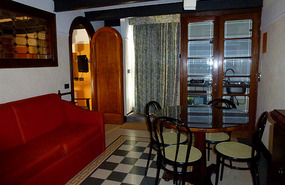
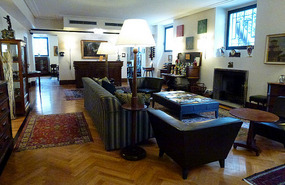
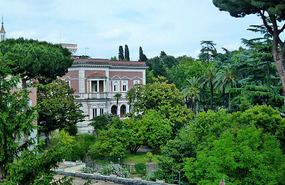
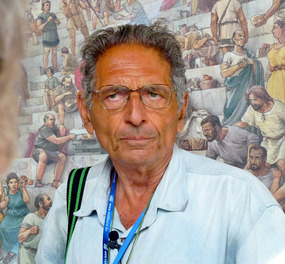
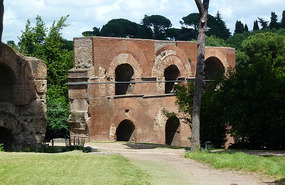
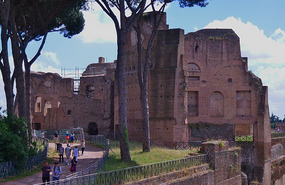
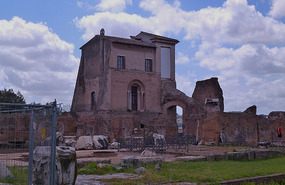
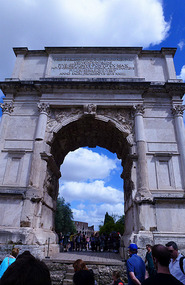
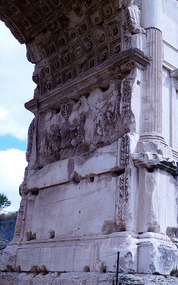
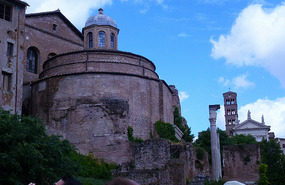
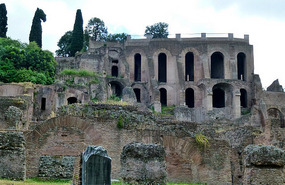
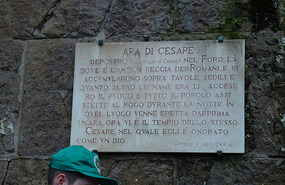
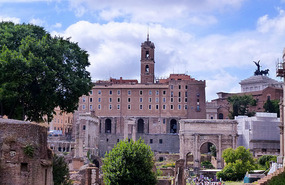
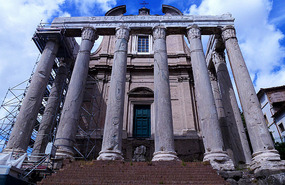
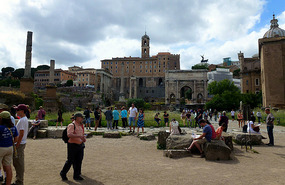
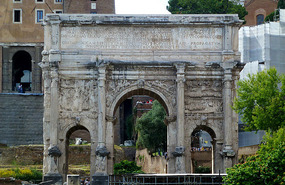
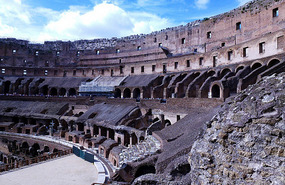
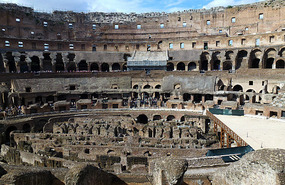
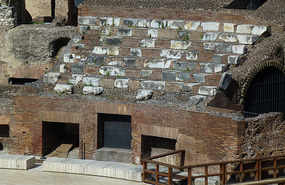
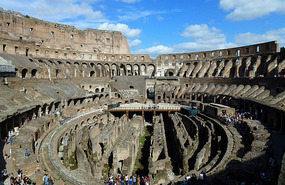
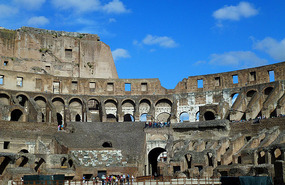
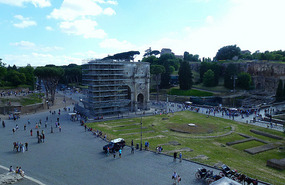







2025-05-22